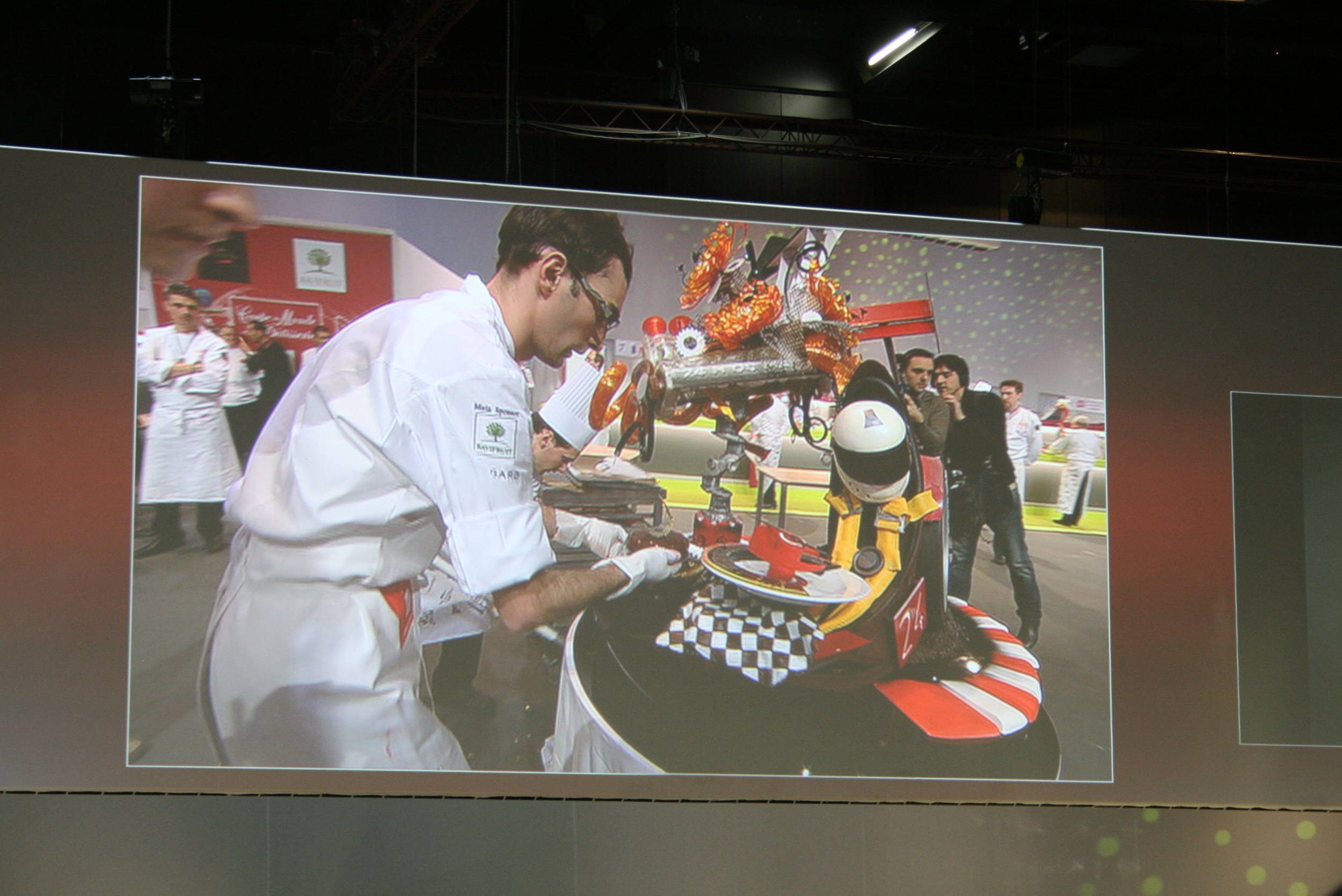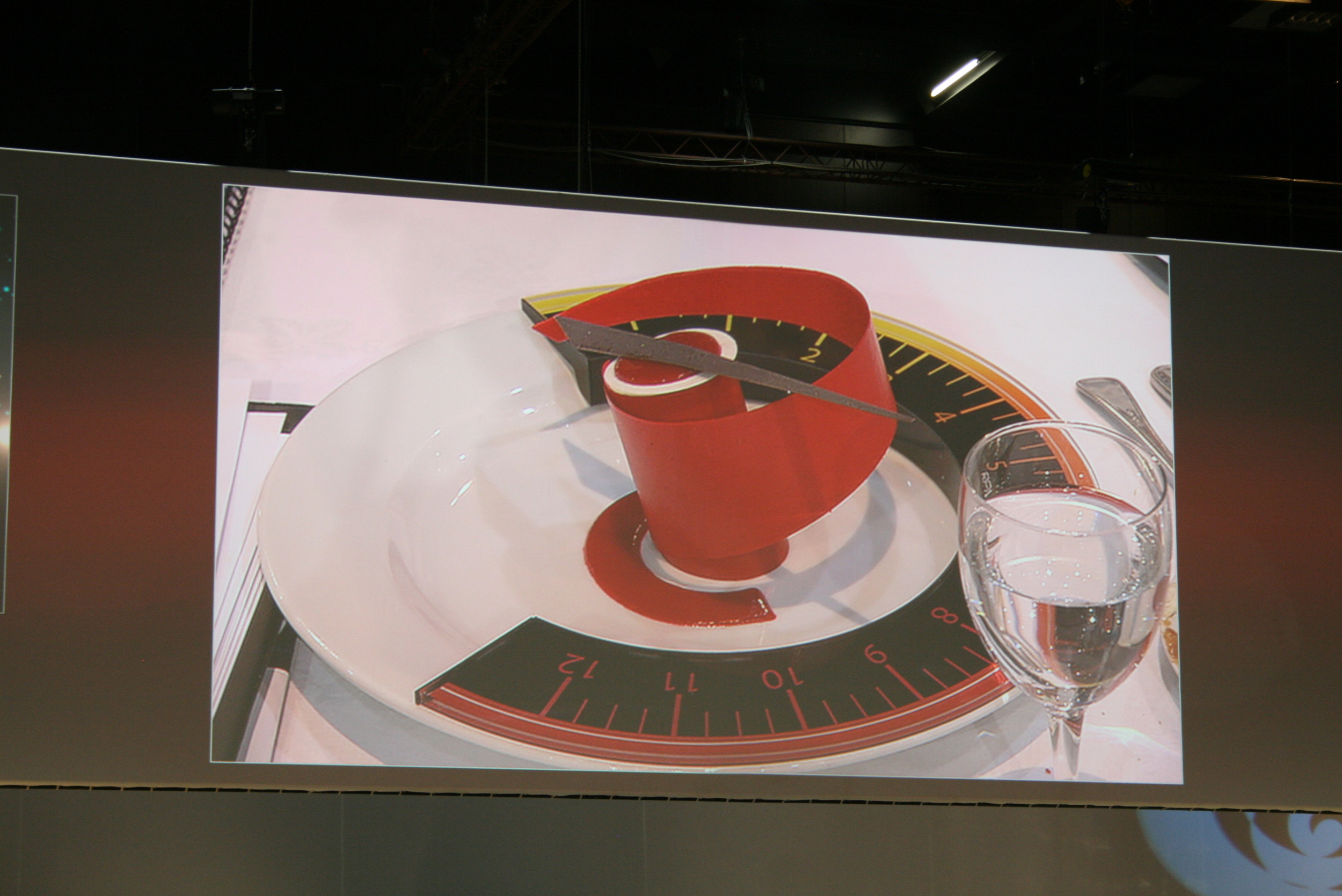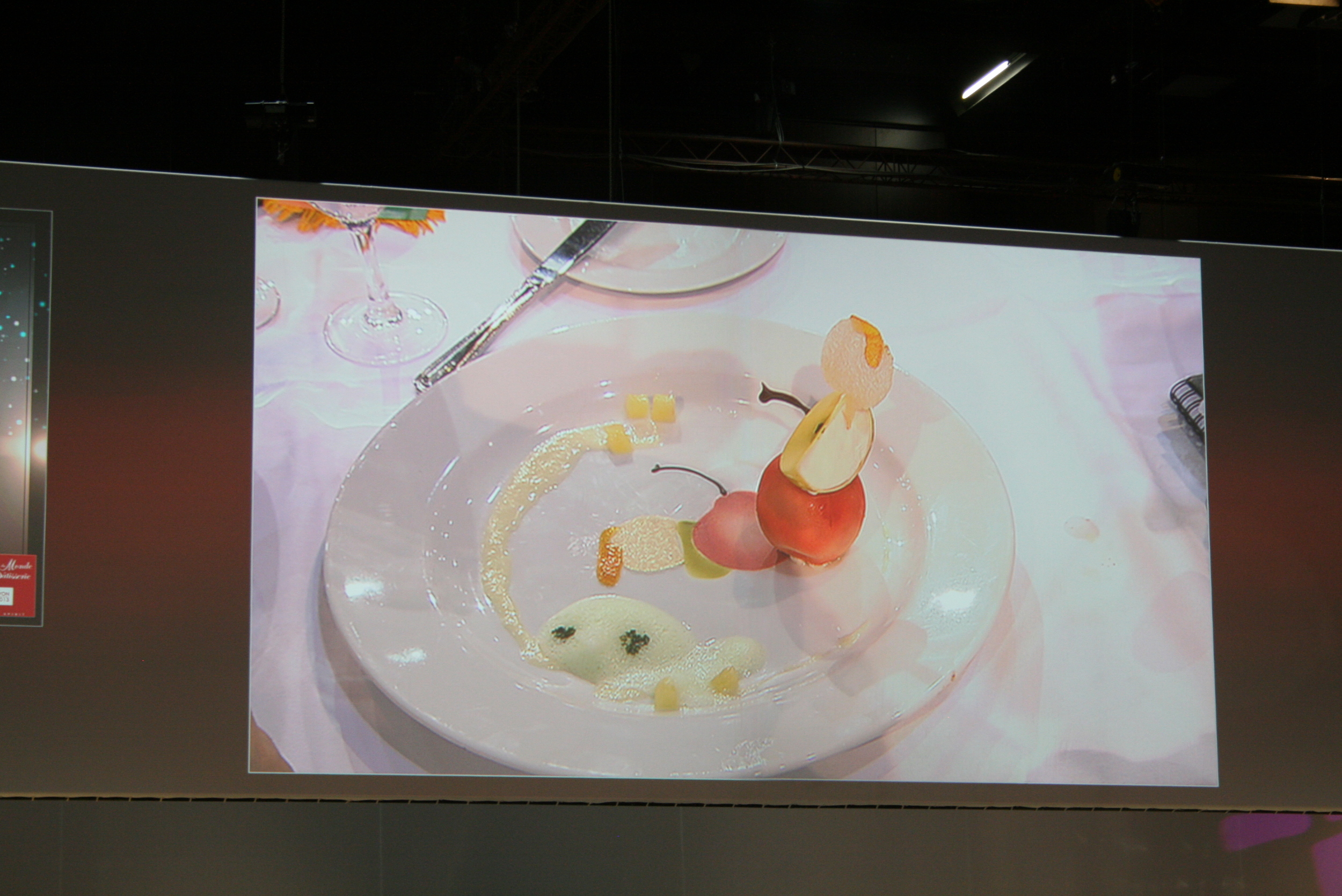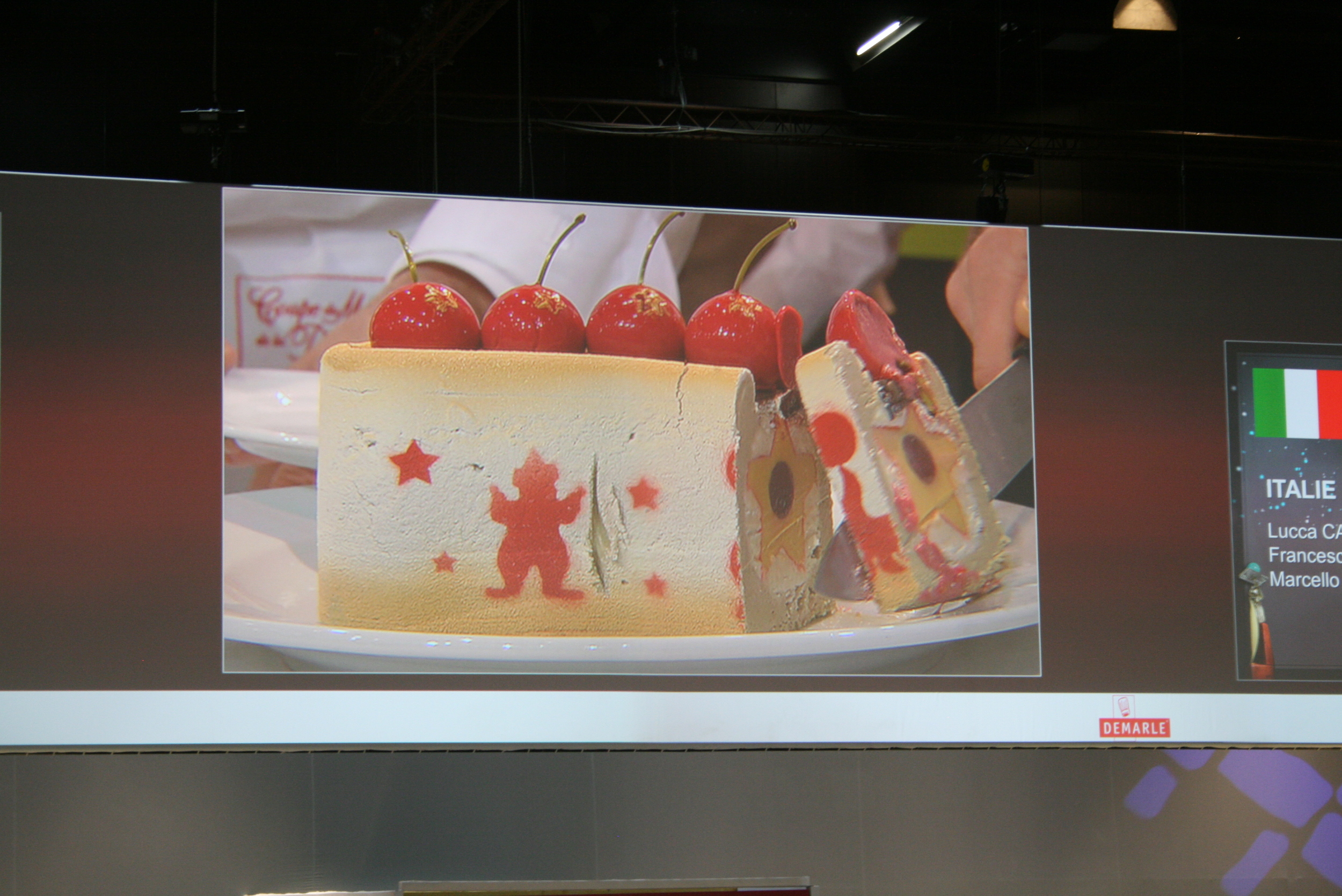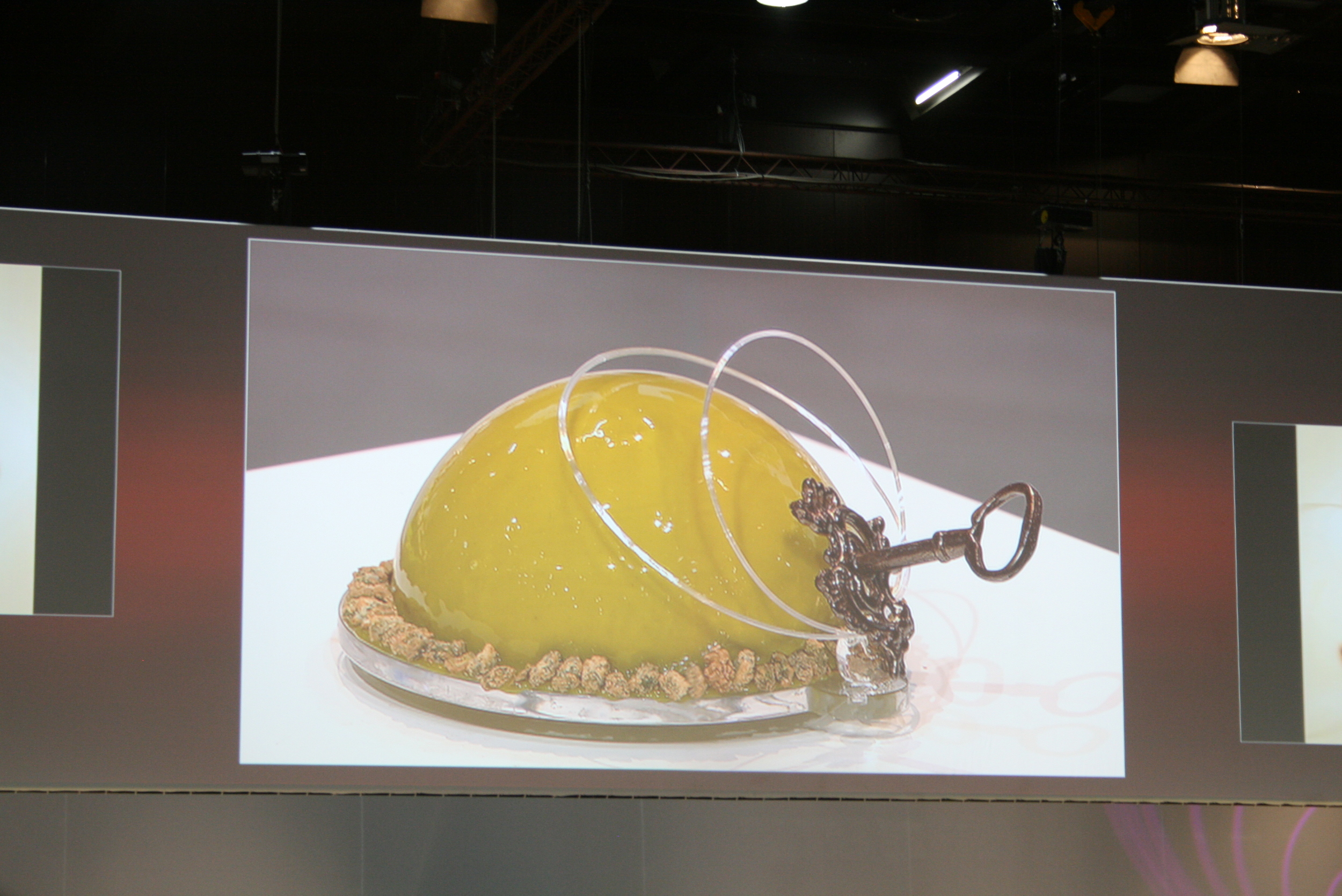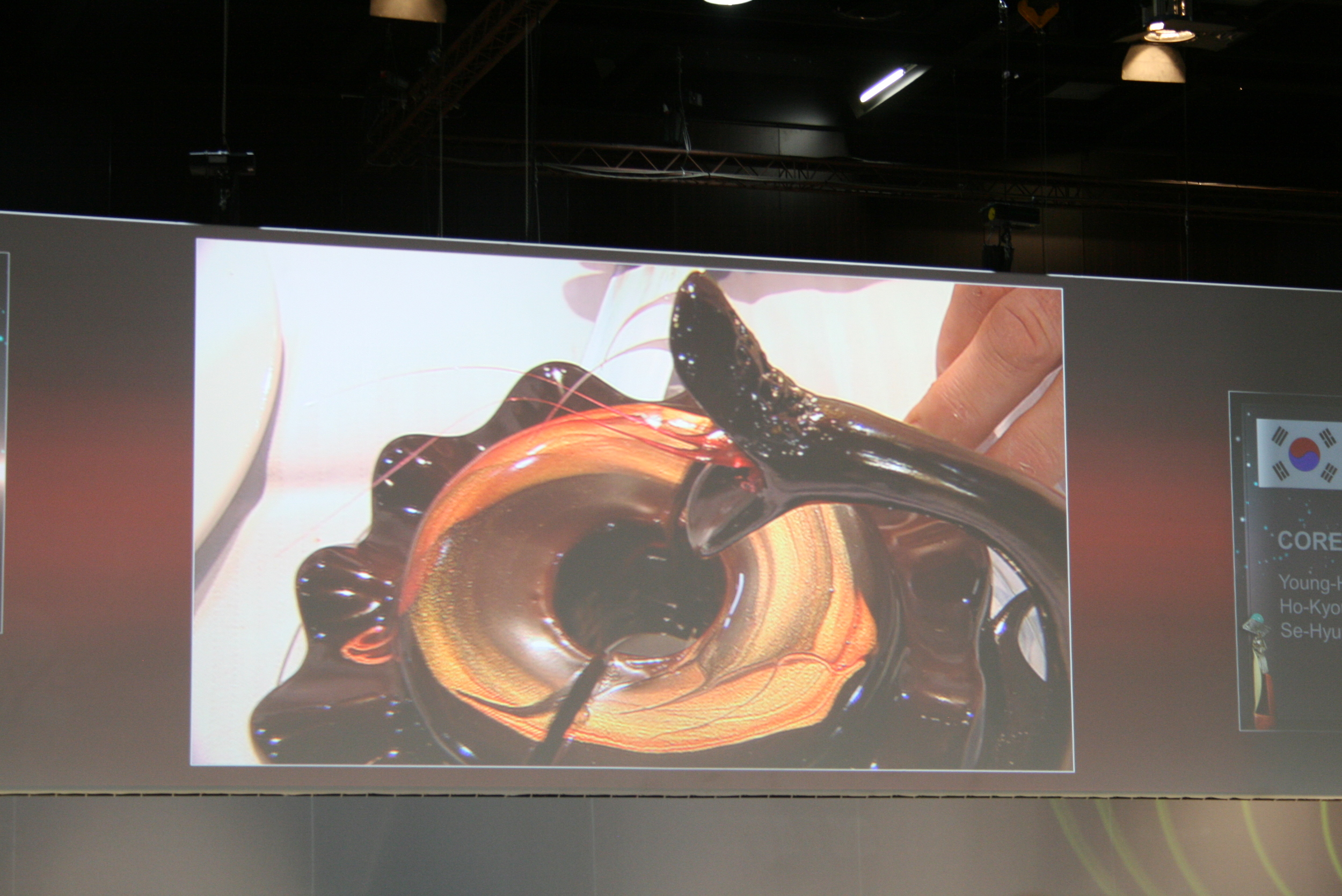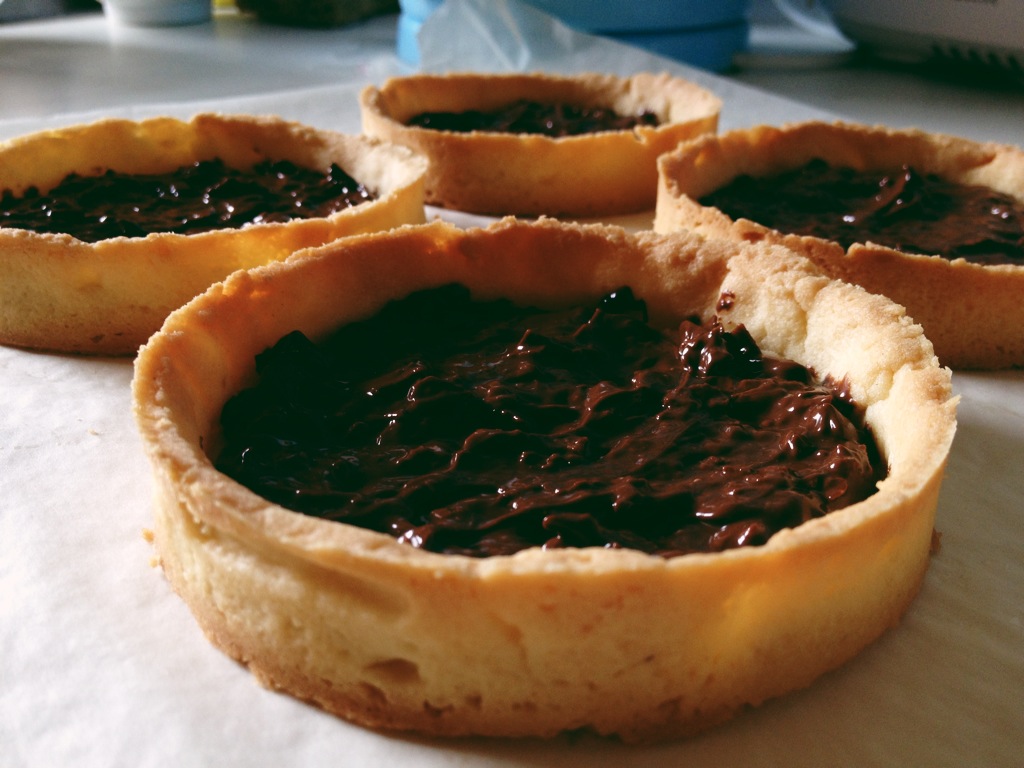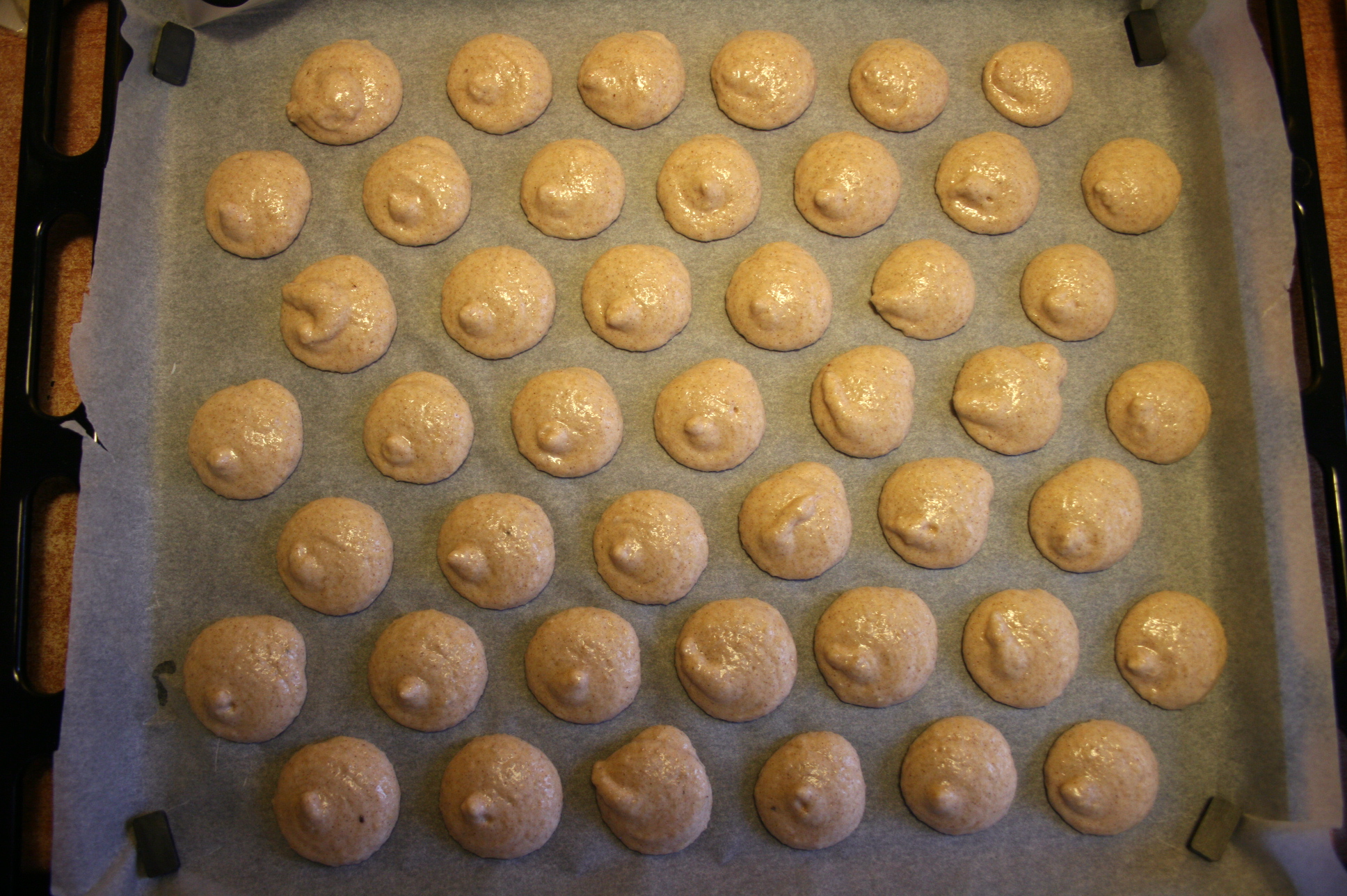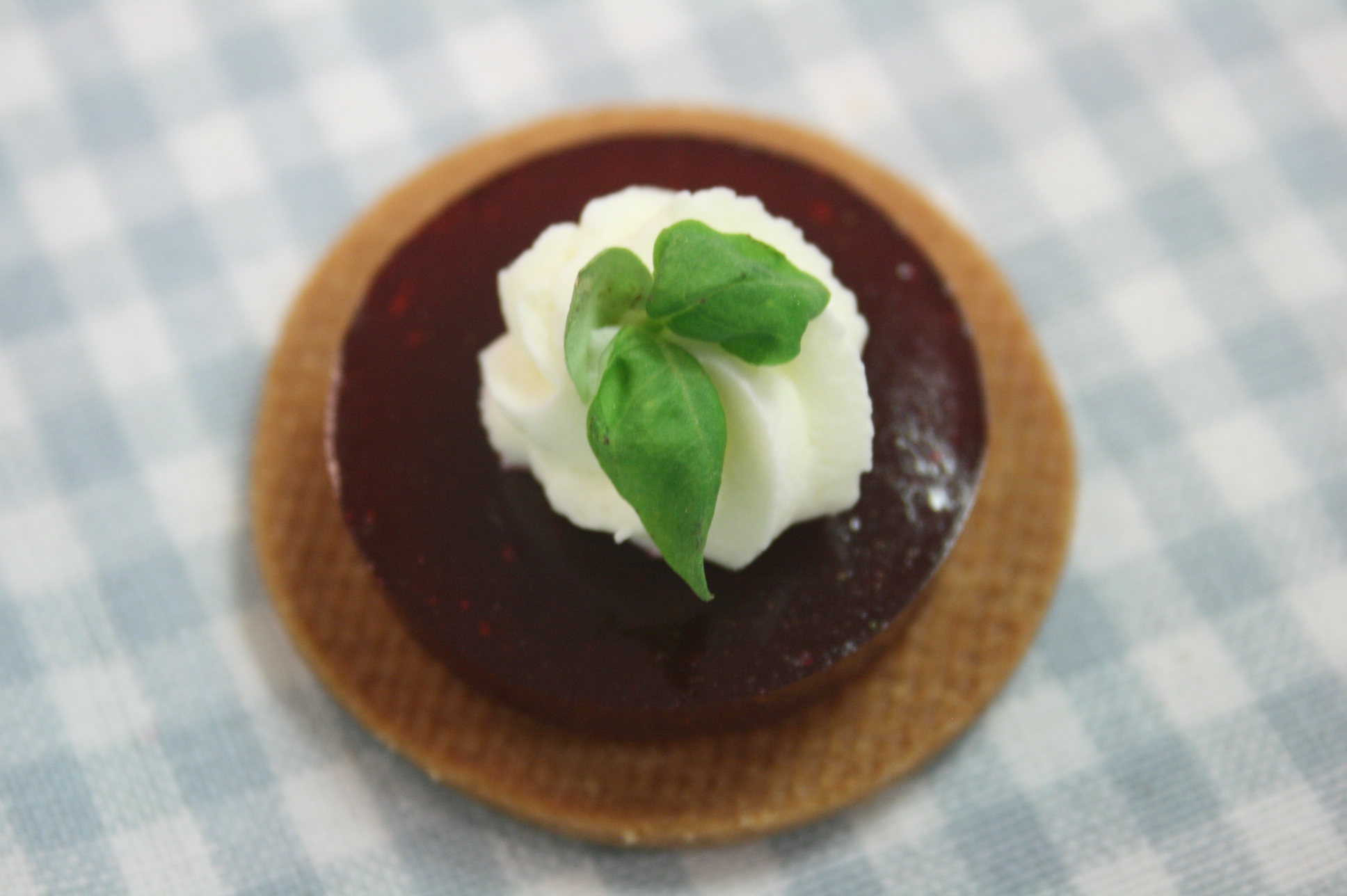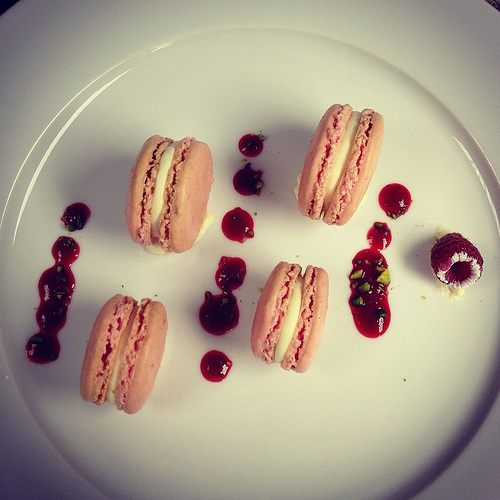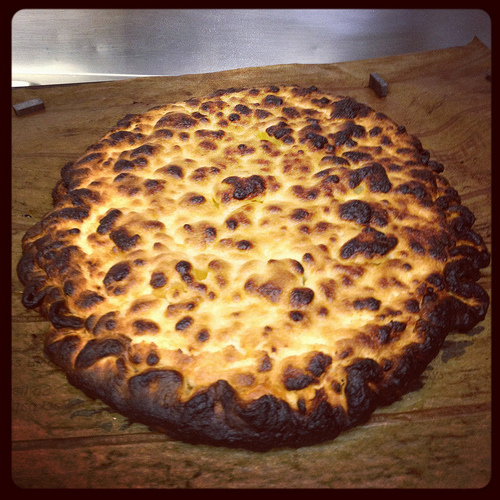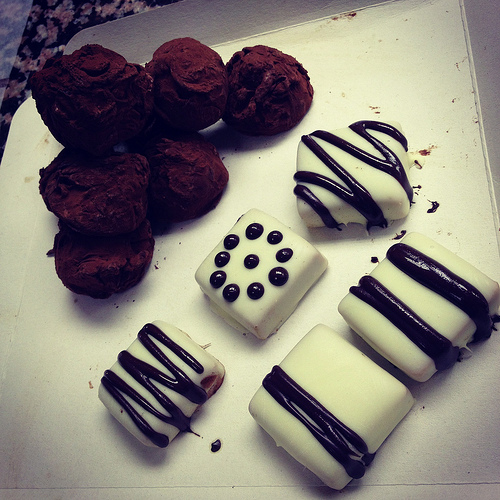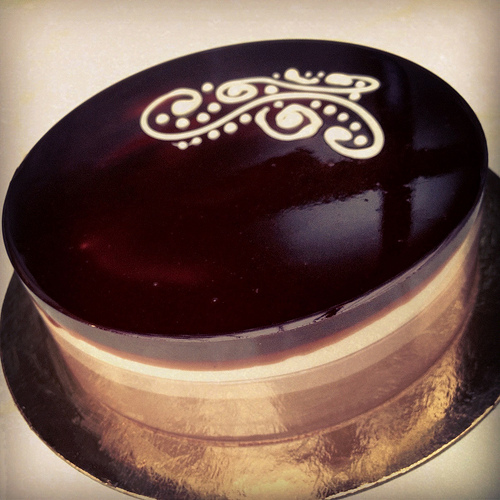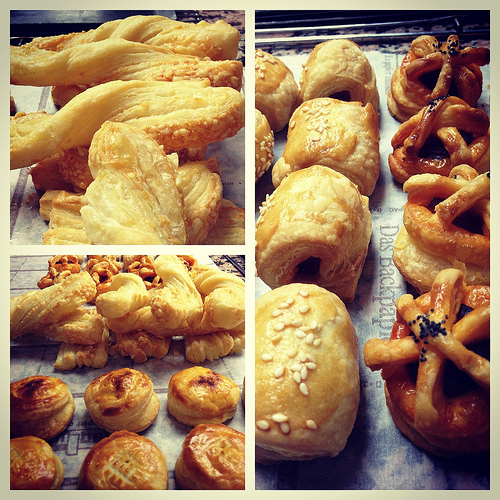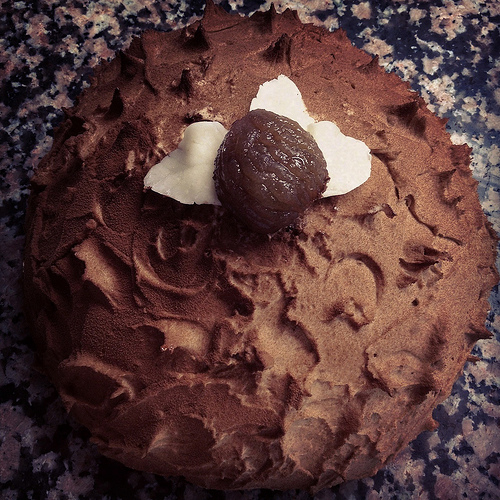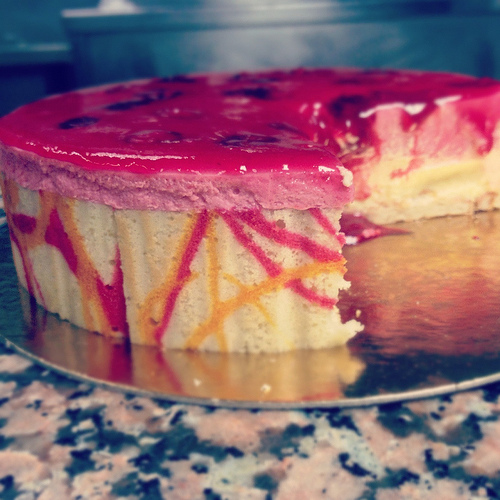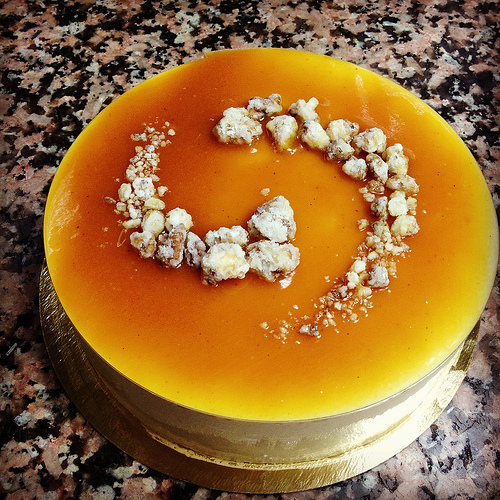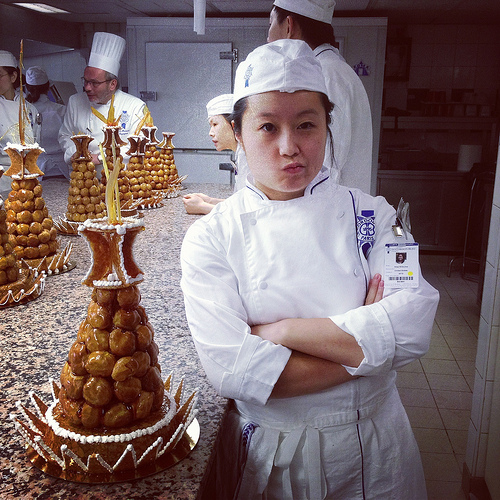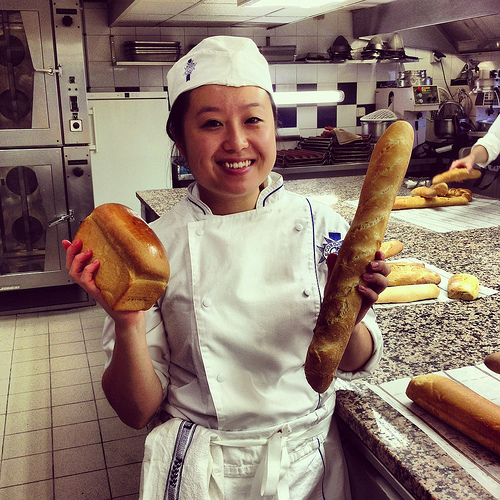“Chefs are strange creatures; their trade is more of a calling, a vocation, than a career. They start young; the training is hard, the hours long, the pay meager. Chefs work when others are having fun. They don’t have real friends. Their marriages don’t work; their children don’t like them. And no one ever invites a chef round for dinner.”
On our second day at Sirha we entered the stadium of the Espace des Chefs to the sound of chainsaws carving massive blocks of ice into delicate sculptures. It was Sunday morning and the first group of teams - Denmark, Japan, USA, Italy, Colombia, Malaysia, Tunisia, Egypt, South Korea, Mexico and Argentina - were presenting their first dishes to the judges.
Over the course of the two-day competition each three-person team (with one alternate) was required to produce a chocolate dessert, fruit dessert, ice showpiece, chocolate showpiece, and plated dessert, all within the allotted ten hours. The international jury consisted of the president of each country's delegation as well as a couple members of the competition's governing body and a smaller press jury.
I knew from watching the Food Network and the documentary Kings of Pastry that, yeah, once you reach a certain level of culinary prowess it's about finding ways to validate and inflate your prestige - earning that next Michelin star, for instance, or perhaps an MOF title if you're French. To say it's competitive is an understatement; when a sugar sculpture goes crashing to the floor it's been known to cause grown men sob profusely. So perhaps it shouldn't seem so surreal, then, exactly how much watching a pastry competition resembles watching a sporting event.
The Coupe du Monde, as the event is called, had a similar energy and atmosphere to a collegiate gymnastics competition (I would compare it to basketball or something more mainstream but really the pace is more akin to the former). There were also commentators (not very insightful; just like in sports), hilariously dramatic music when teams were introduced, and cheering sections (and extremely vocal ones at that; well at least for Japan, Singapore, Taiwan, France and the UK).
But, unlike in athletics, watching the process was more satisfying than the results. I'm skeptical of institutions that claim to judge art (but I have to admit I love the Oscars because I find Hollywood politics fascinating), which is why we ended up leaving before the jury announced the final results. And in the end I got out of watching the competition exactly what I was hoping for: inspiration.
I left my zoom lens at home, like a dunce, so here are some "screen caps" of pieces I really liked from the competition.
